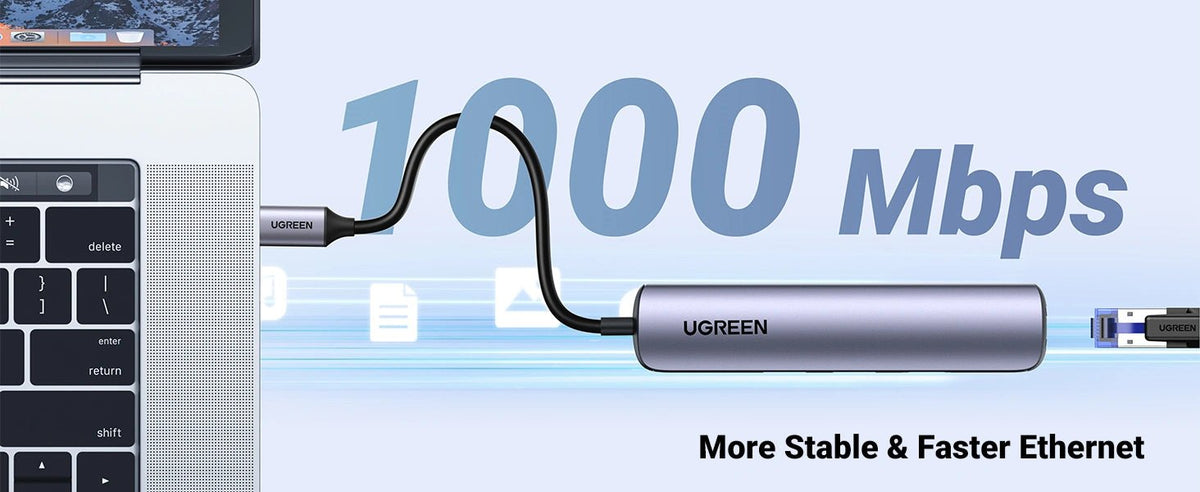
The Essential Guide to Choosing Between USB Hubs and Powered USB Hubs
|
|
Time to read 4 min
|
|
Time to read 4 min
In an age where connectivity is key, USB hubs have become an indispensable tool for expanding the capabilities of our devices. With the many options available, it can be daunting to choose the right one. This guide will help you understand the difference between standard USB hubs and powered USB hubs.
A USB hub is a compact device that expands a single Universal Serial Bus (USB) port on your computer into multiple ports. This allows you to connect several devices at once, such as flash drives, printers, digital cameras, mice, and keyboards. USB hubs are particularly useful for laptop users with a limited number of USB ports or situations where multiple USB devices need to be used simultaneously.
Typically, there are two types of USB hubs: powered (active) and unpowered (passive). Powered USB hubs come with an external power adapter to supply electricity to connected devices, which is crucial for those devices that require additional power. Unpowered USB hubs do not have an external power supply and draw power from the host computer's USB port. This means they are suitable for devices that have low power requirements.
A standard USB hub, which is an unpowered hub, is the most common USB expansion solution. They do not require a separate power plug, hence they are generally more compact and portable in design. Such hubs are suitable for devices that can operate without additional power, such as keyboards, mice, and USB flash drives.
If your usage scenario is primarily for office or home use, and the devices you need to connect are not particularly power-hungry, then a standard USB hub is a simple and cost-effective choice. For instance, you might need to connect a mouse, keyboard, and printer to your laptop simultaneously, but these devices don’t have high power demands, so a standard USB hub would suffice.

The advantage of standard USB hubs lies in their plug-and-play functionality, requiring no additional drivers or software for installation. Moreover, their portability makes them ideal for travel or mobile offices, allowing users to easily carry them in a laptop bag, ready to expand connectivity options anywhere and anytime.
However, if you plan to connect multiple devices that consume a lot of power, such as external hard drives or peripherals that may need additional power, a standard USB hub might not provide stable power. In such cases, you may need to consider a powered USB hub.
Powered USB hubs, also known as active USB hubs, offer a distinct advantage over their unpowered counterparts by including an external power supply. This external power source ensures that each connected device receives adequate power without drawing too heavily from the host computer’s USB port. Here are some of the benefits of using powered USB hubs:
Choosing a powered USB hub can be advantageous for several reasons:
In conclusion, opting for a powered USB hub can greatly enhance the functionality and reliability of your USB-connected devices, especially in environments where power demands are high or system stability is paramount.
When selecting a USB hub, there are several factors you should consider, including the number of ports, data transfer speed, power delivery, and build quality. UGREEN’s hubs are designed to excel in all these areas, providing a seamless and powerful user experience.
For those who need a dedicated hub for their MacBook, the UGREEN 5-in-2 USB-C Hub for MacBook Pro/Air is tailor-made to enhance your MacBook's connectivity. It offers 3 USB-C ports with high-speed data transfer. Its plug-and-play design ensures a hassle-free experience. USB C Gen 2 Thunderbolt Compatible The USB C port is a Thunderbolt 3 port which supports 100W PD charging.

If you're after a hub that's both portable and powerful, the UGREEN Ultra Slim 5-in-1 USB-C Hub should be at the top of your list. This hub's compact form factor doesn't skimp on functionality, offering two high-speed USB 3.0 ports, 100W PD charging, and a 4K HDMI port for displays.

For the ultimate in connectivity, the UGREEN 6-in-1 USB-C Hub with 4K HDMI is the way to go. Its 4K HDMI output is perfect for high-resolution displays, while the Ethernet port offers a stable wired internet connection. With USB 3.0 ports and power delivery, this hub is a powerhouse for data transfer and charging.

When deciding between a standard USB hub and a powered USB hub, consider the types of devices you'll be connecting. For high-power devices or a stable work setup, a powered hub is the way to go. For travel or light use, a standard hub may suffice.
USB hubs are a simple solution to enhance your device connectivity. Whether you choose a standard or powered hub, UGREEN offers reliable options that cater to various needs. By considering your requirements and preferences, you can select a hub that seamlessly integrates into your digital lifestyle, boosting productivity and efficiency.